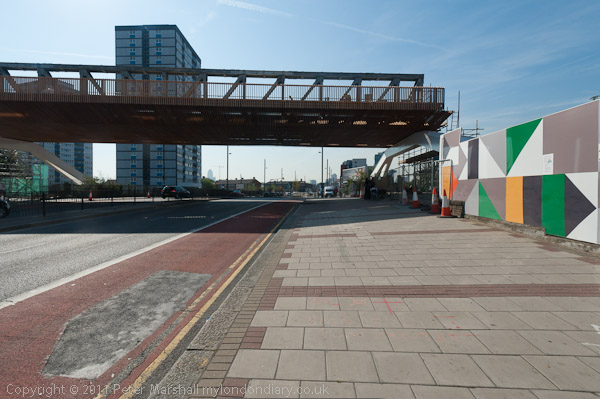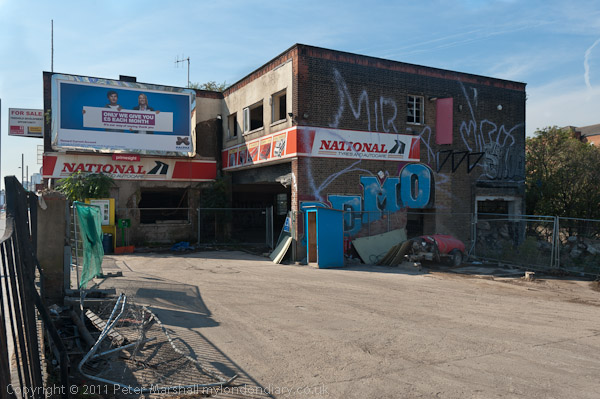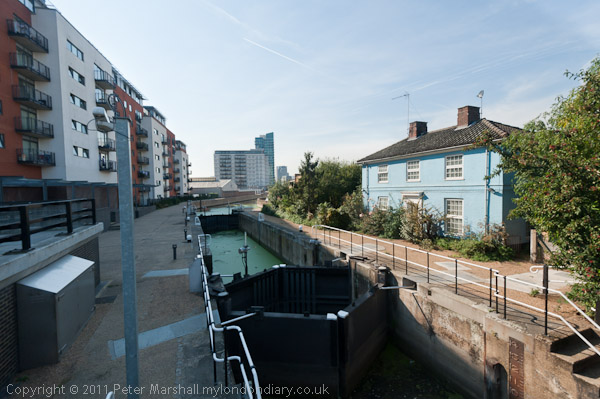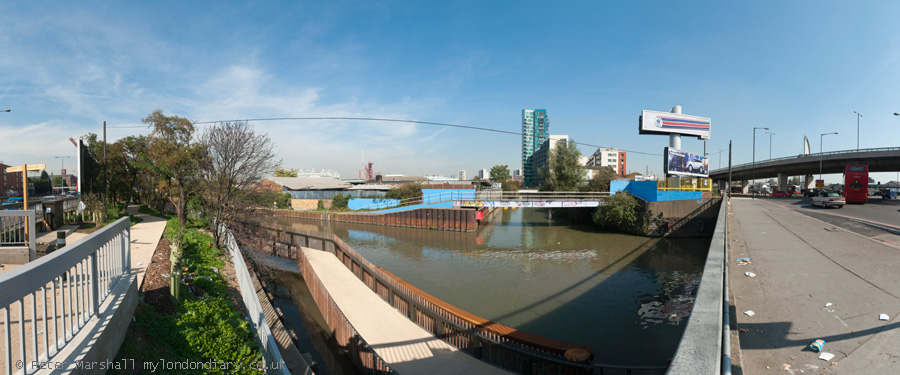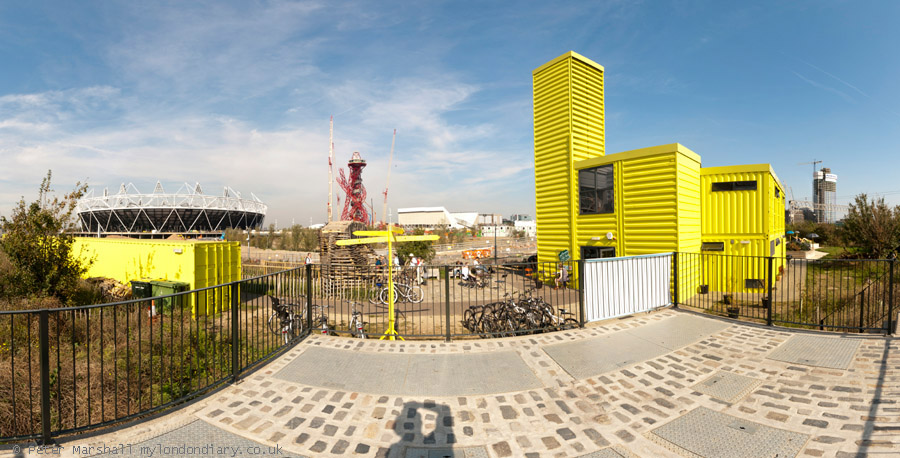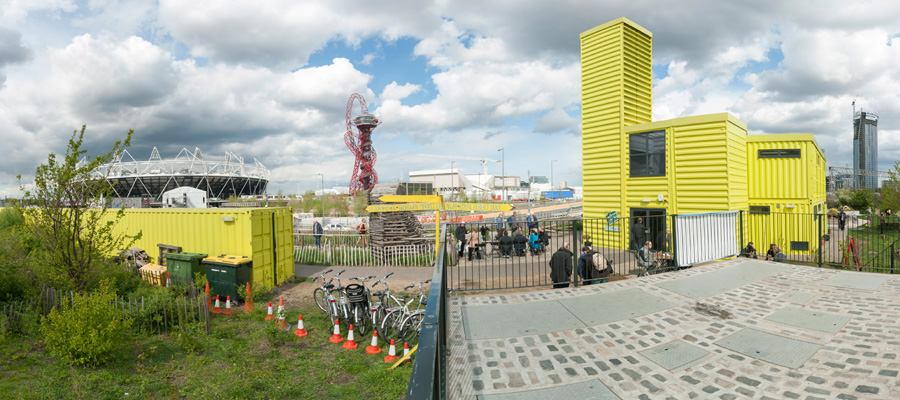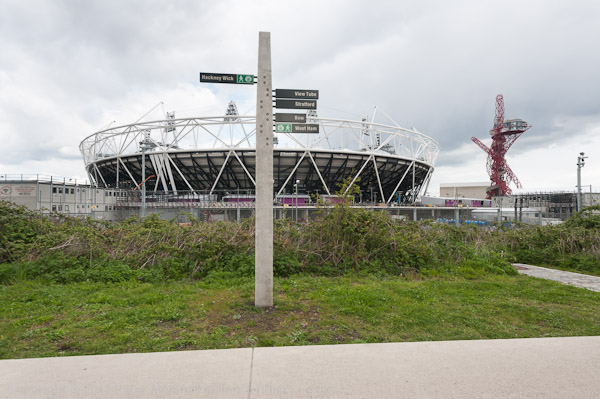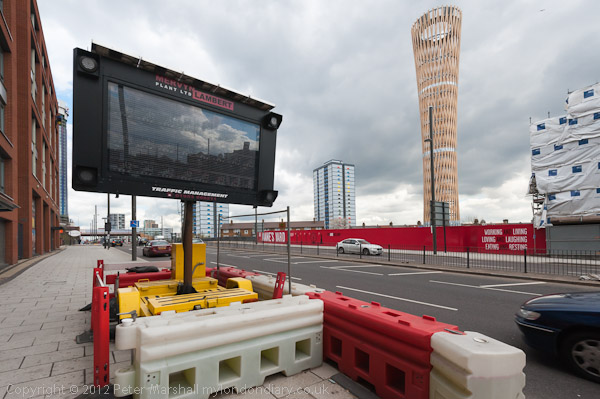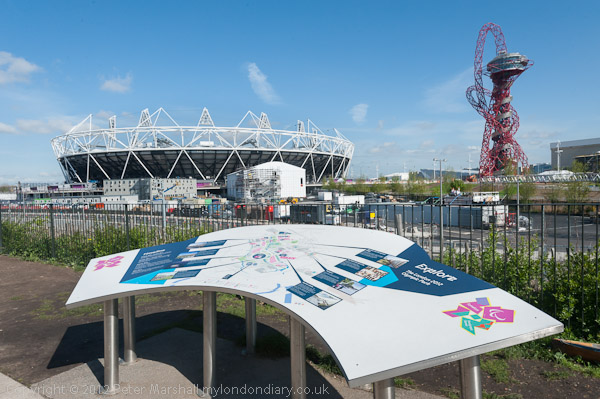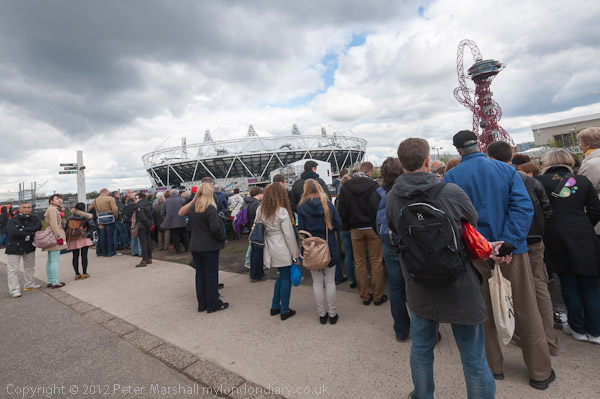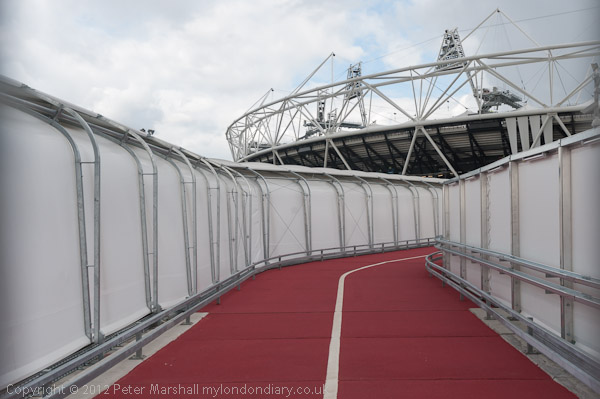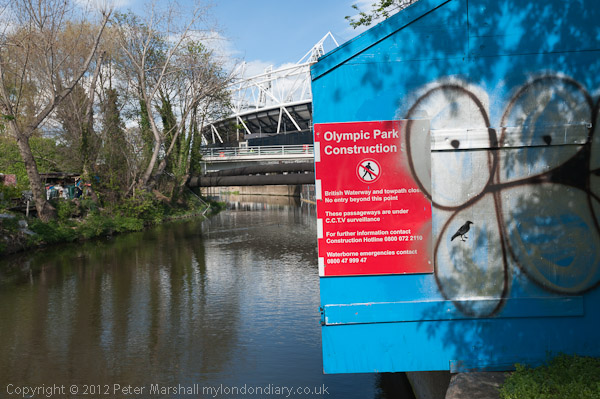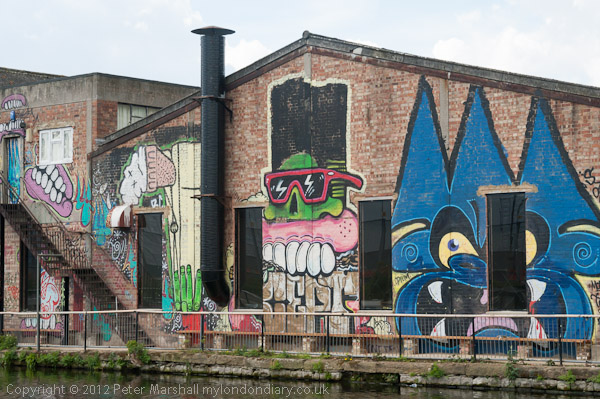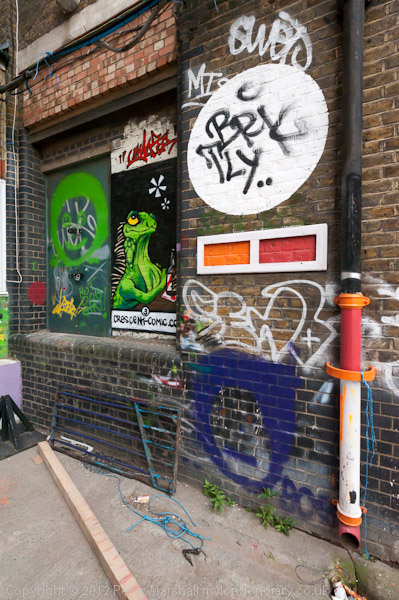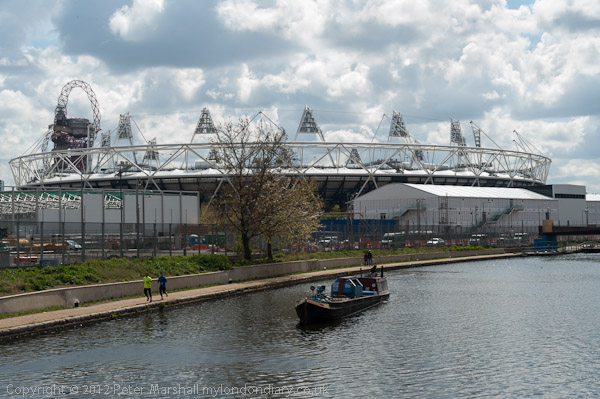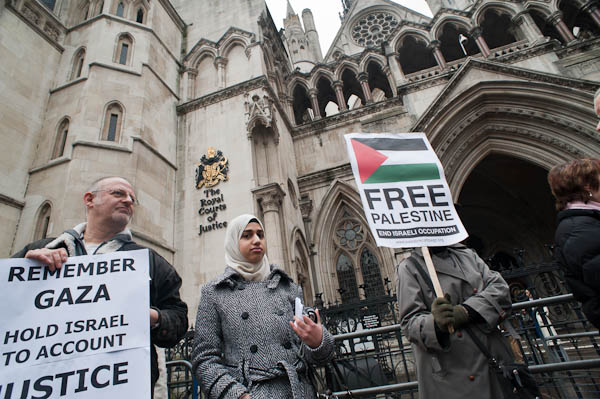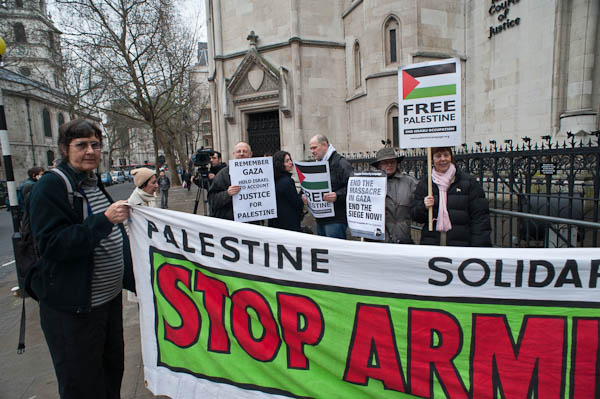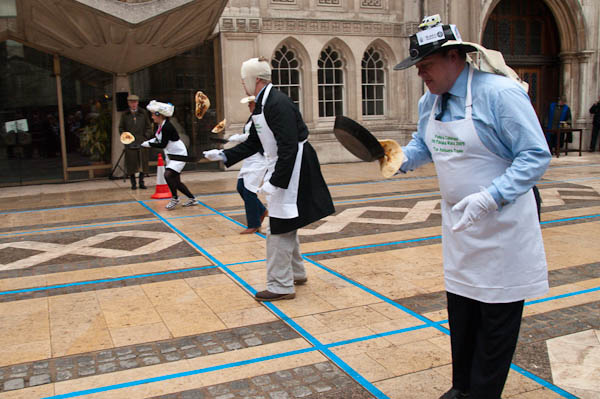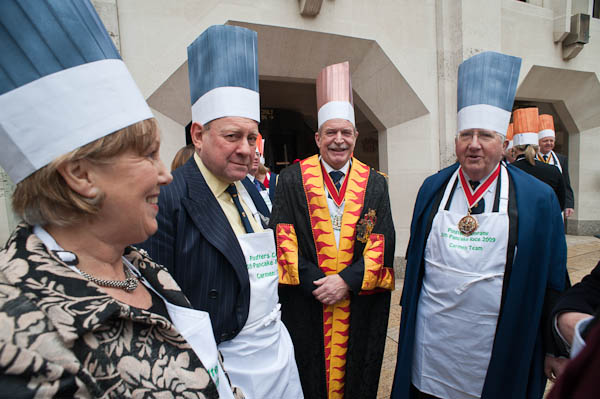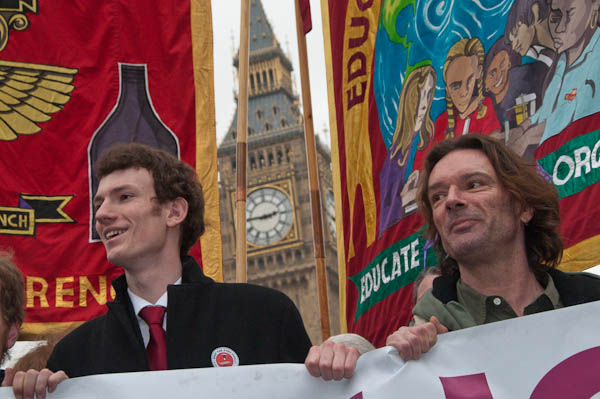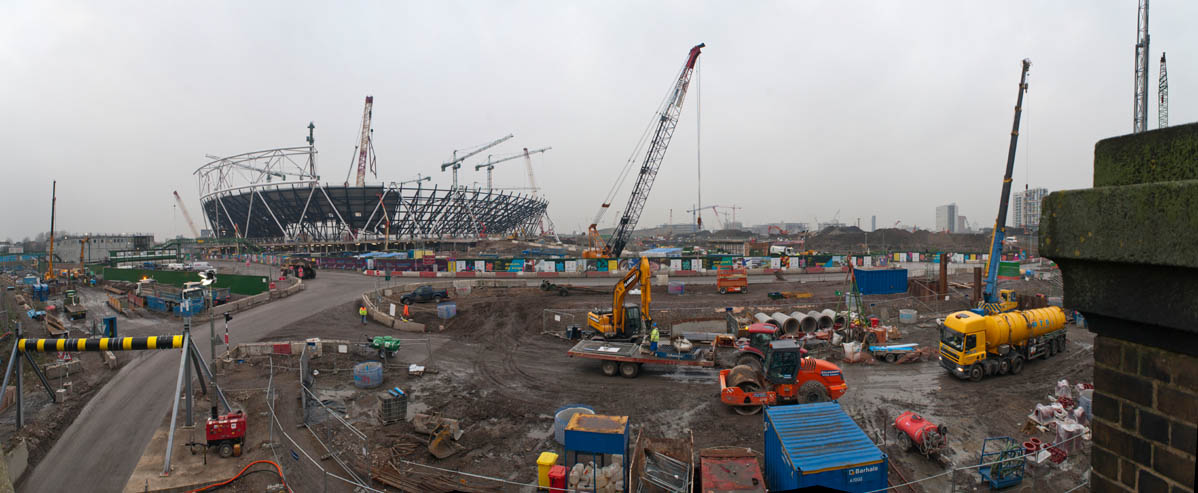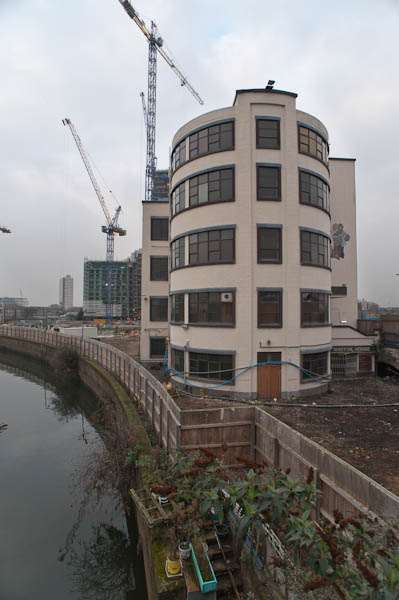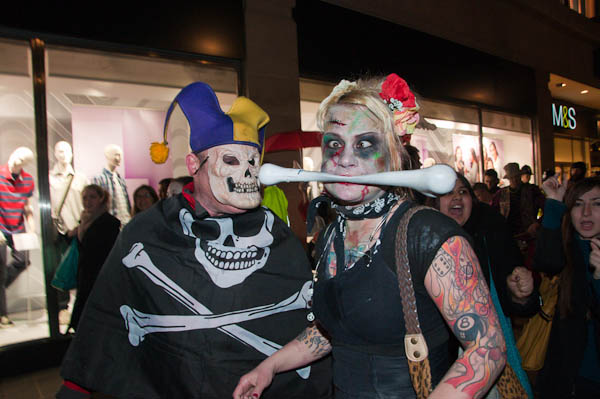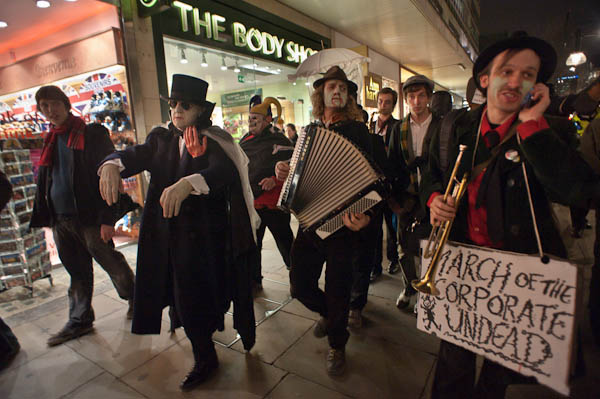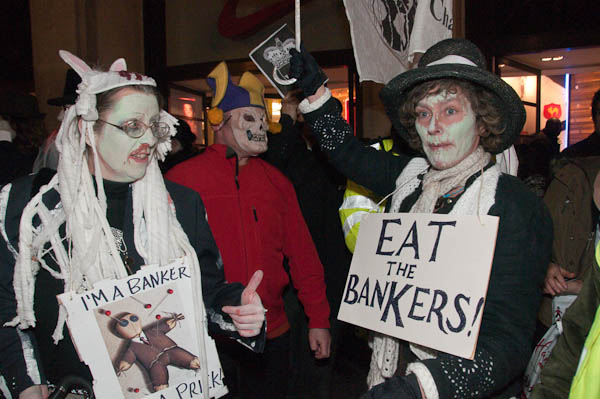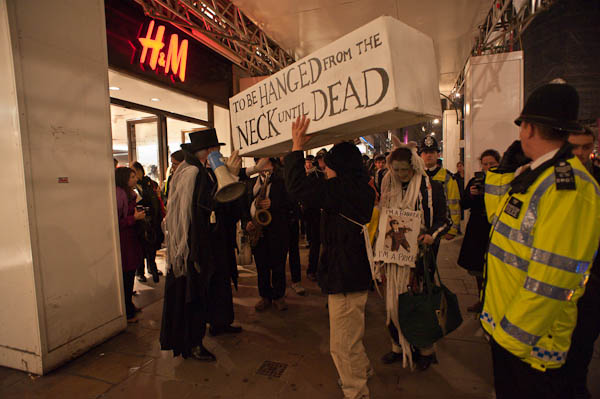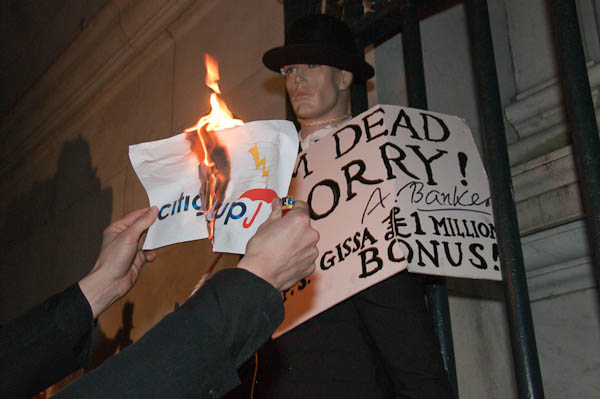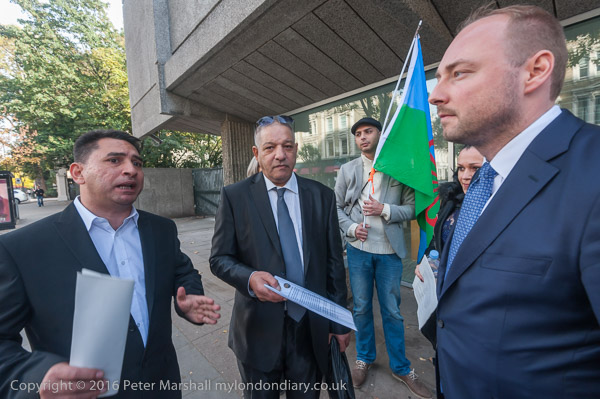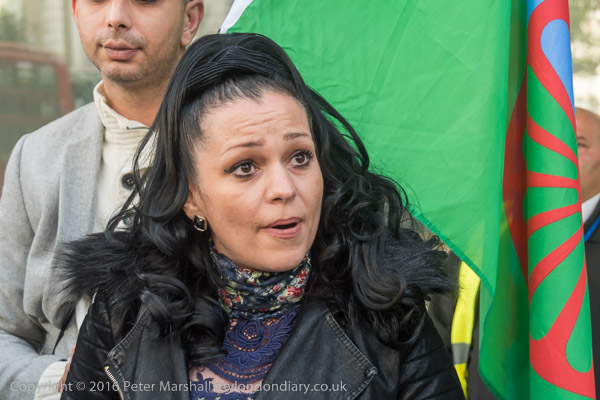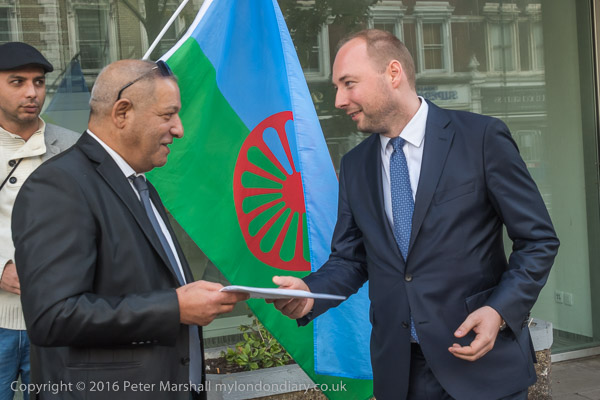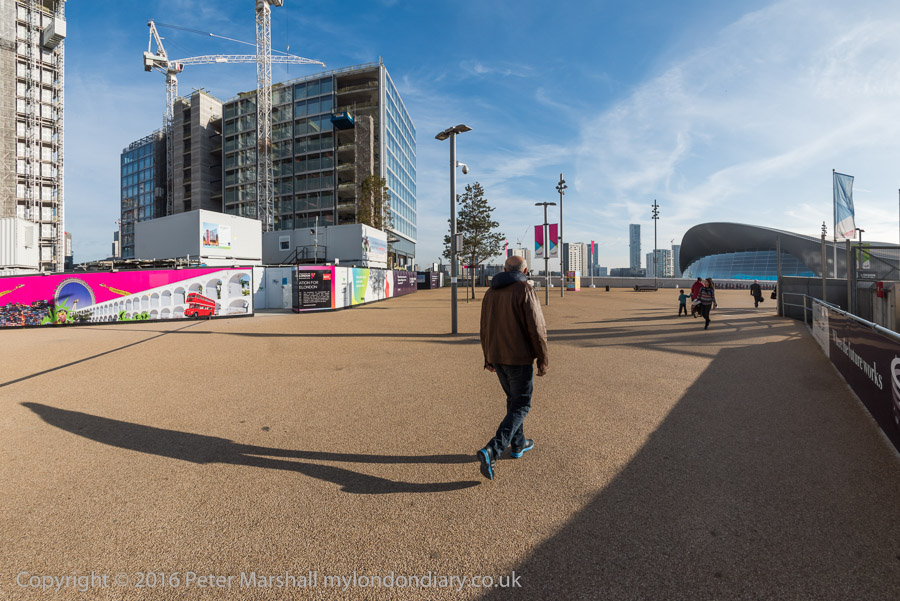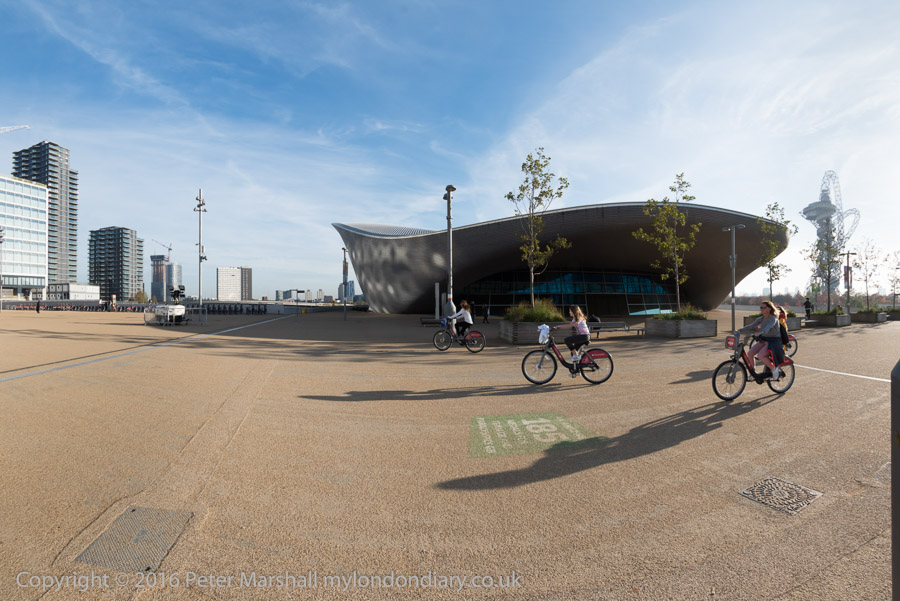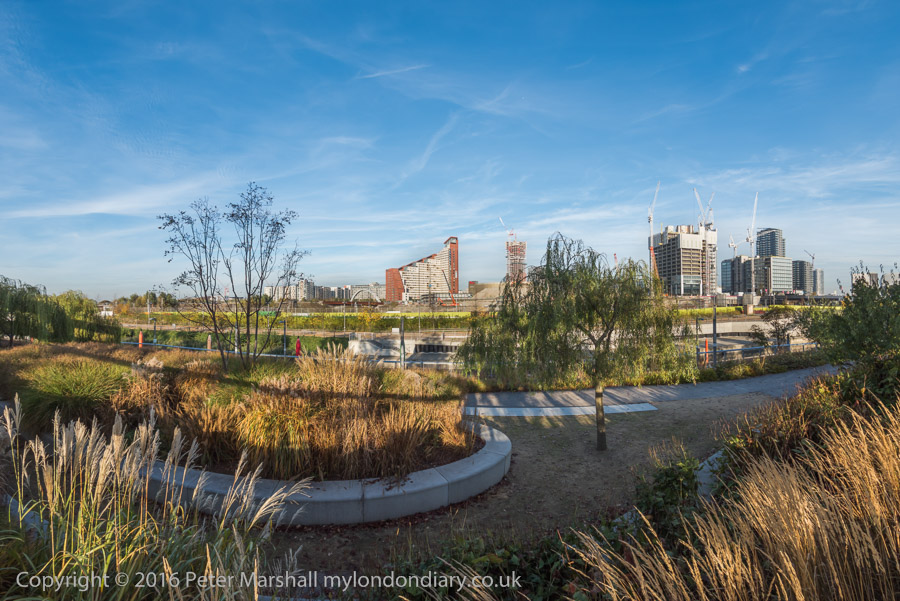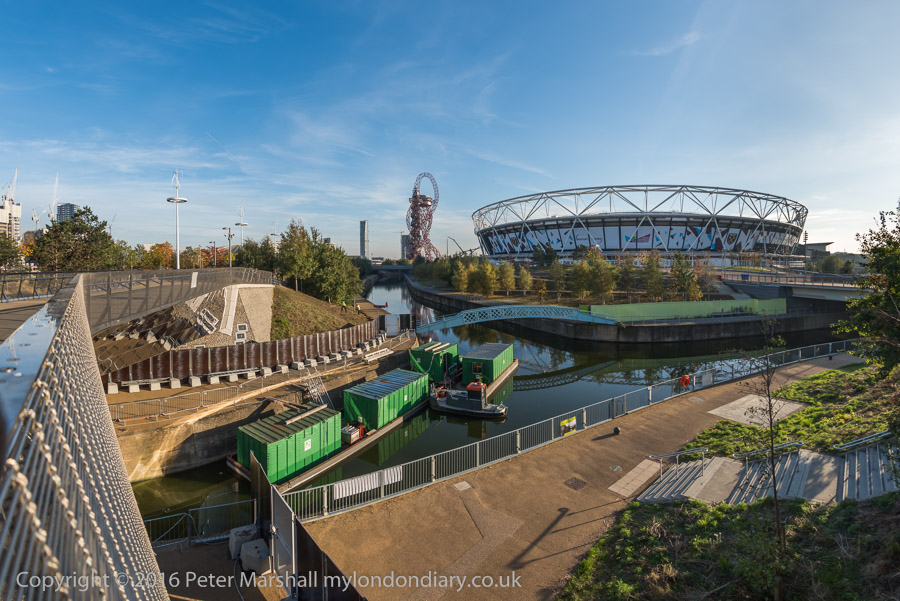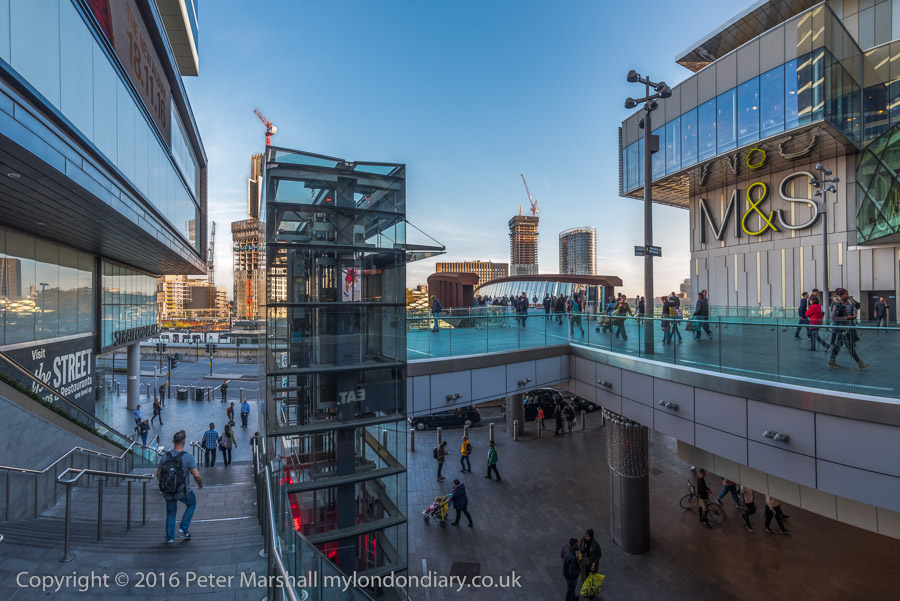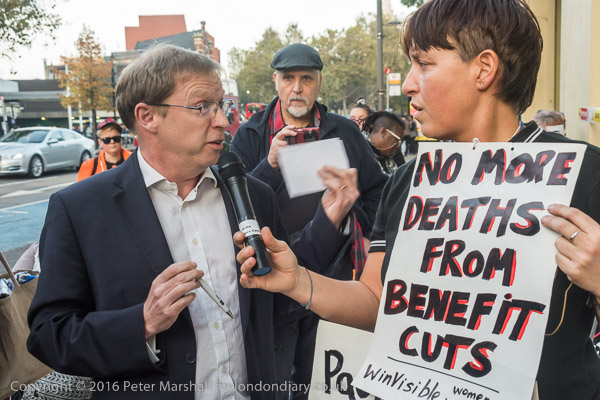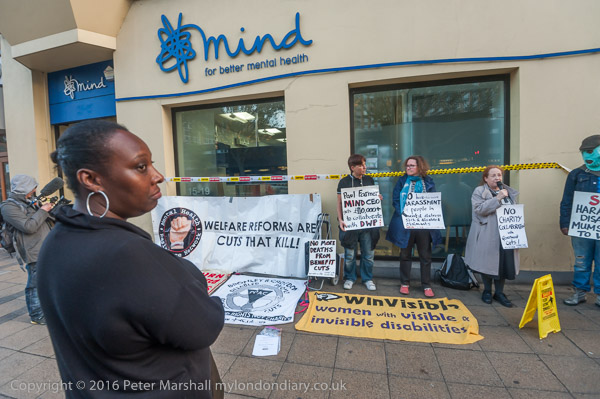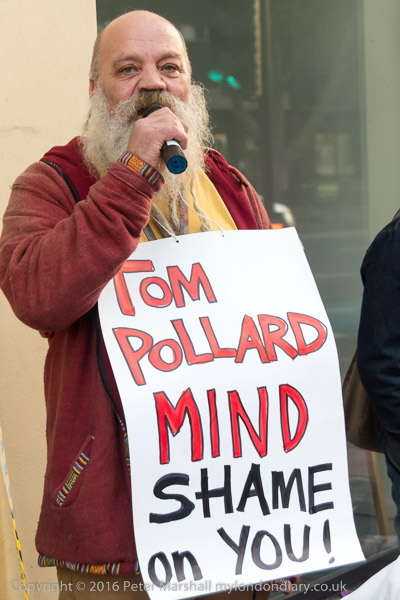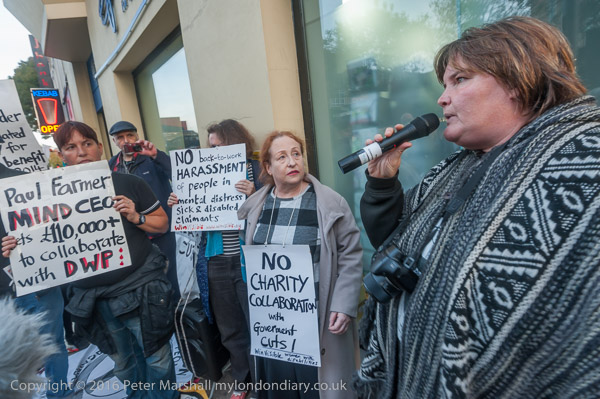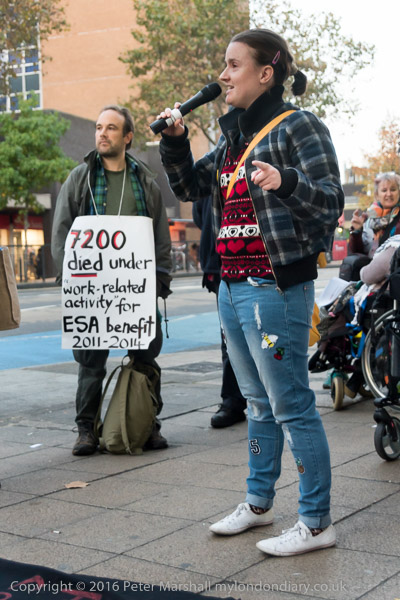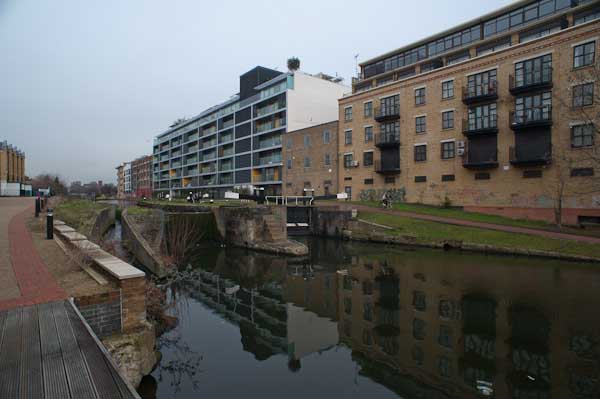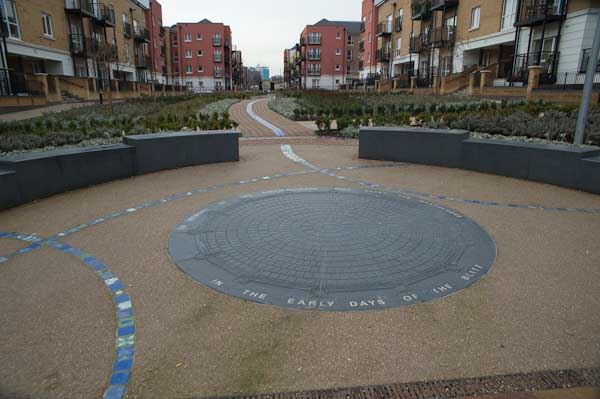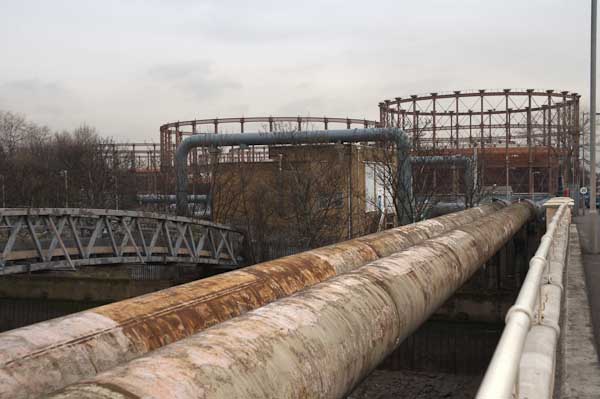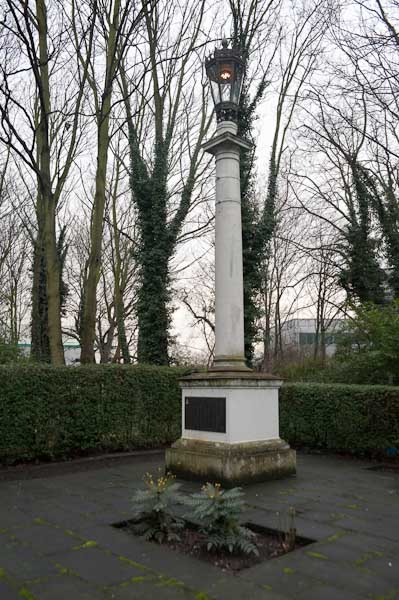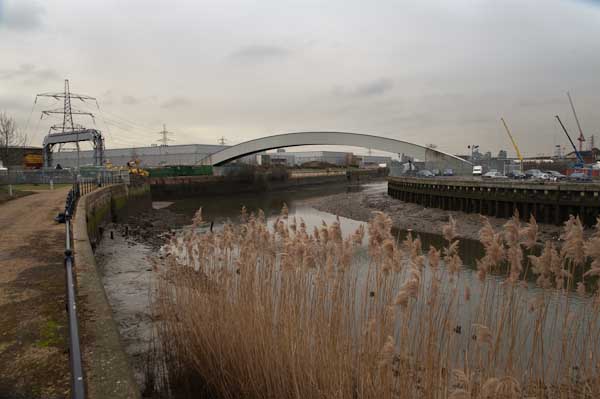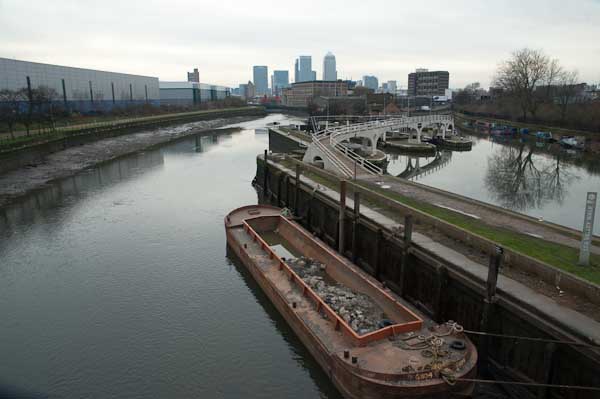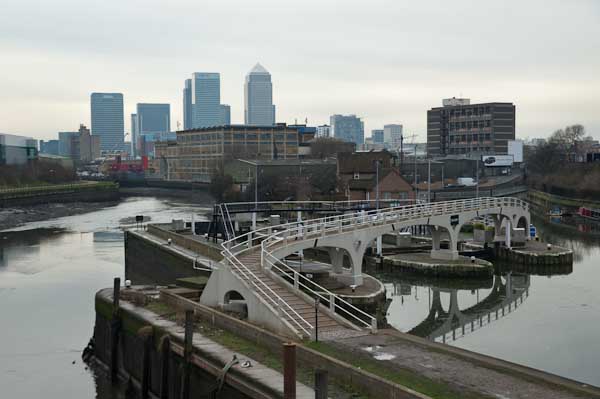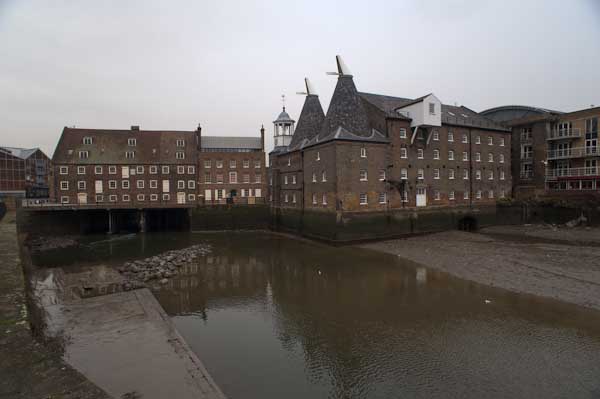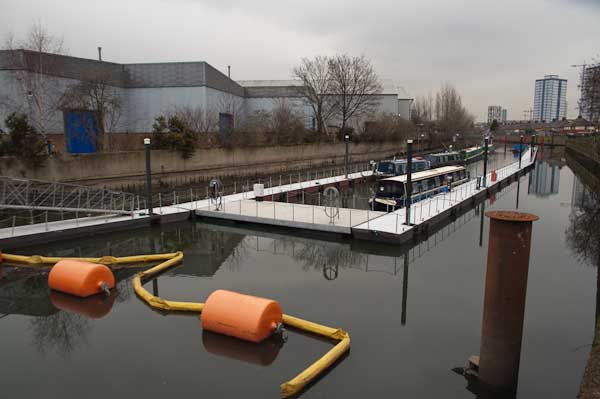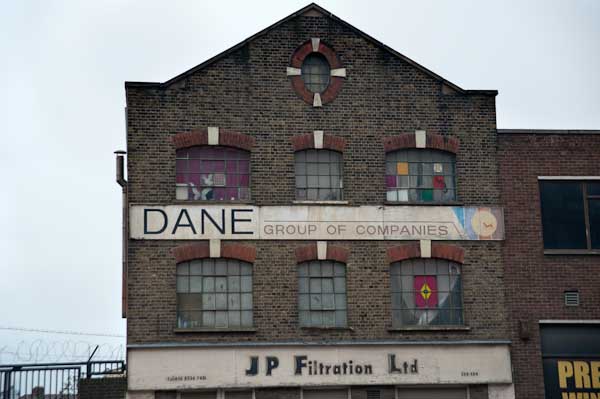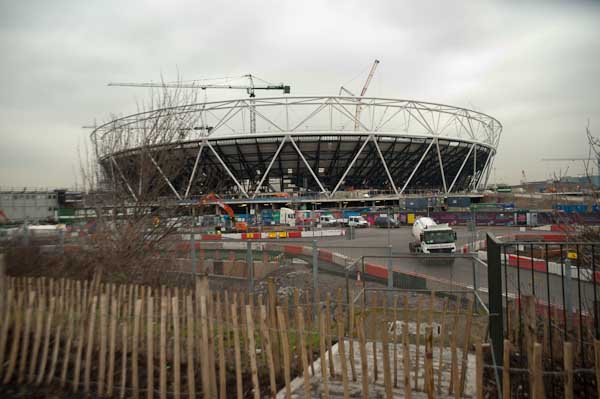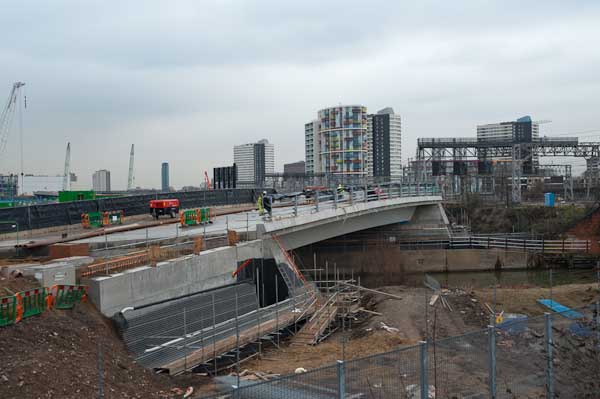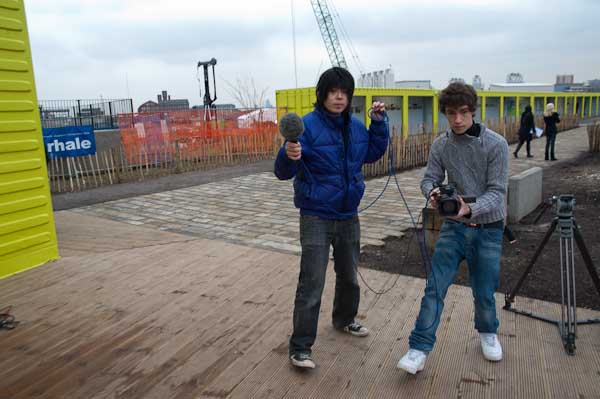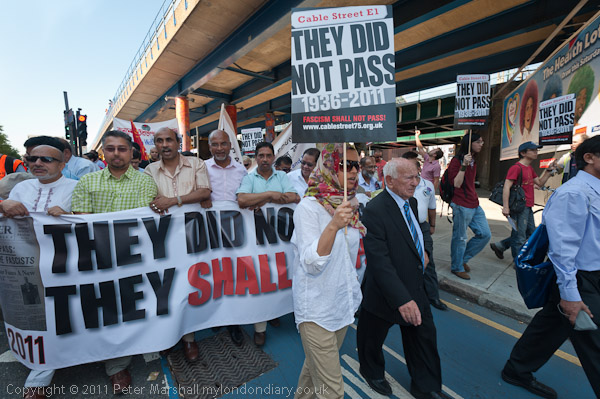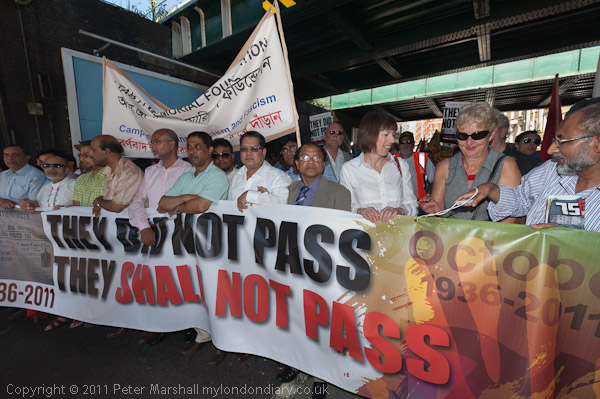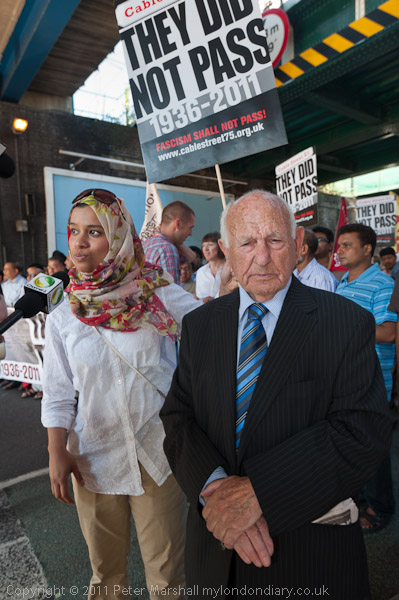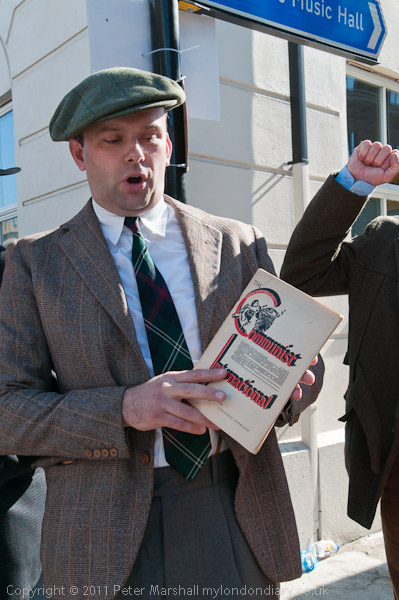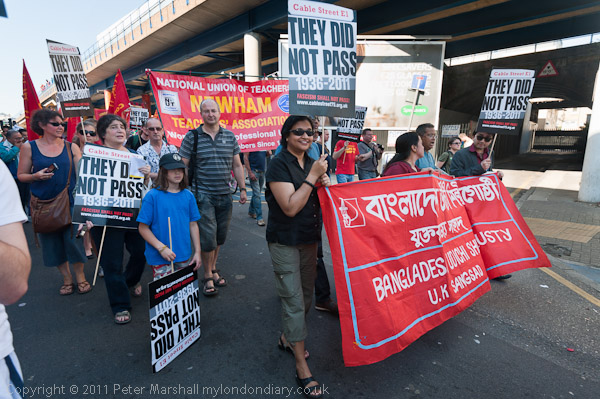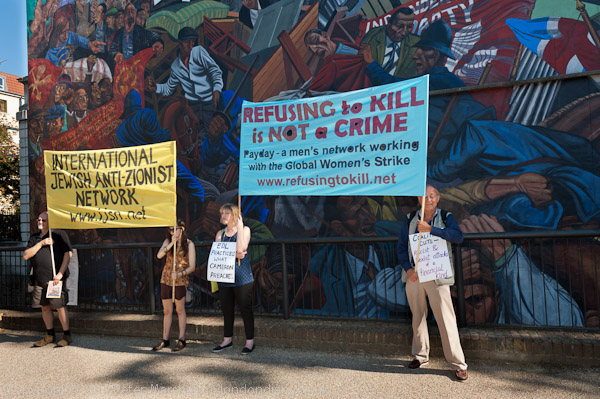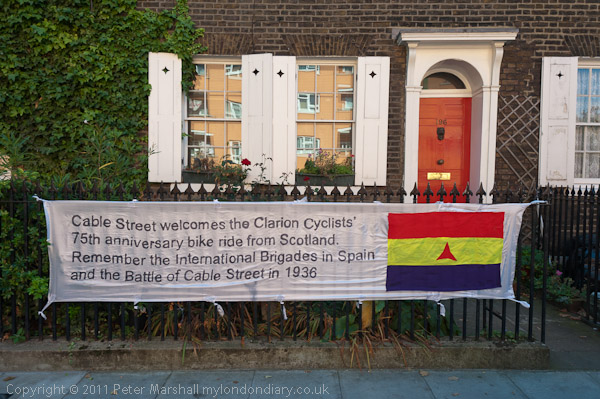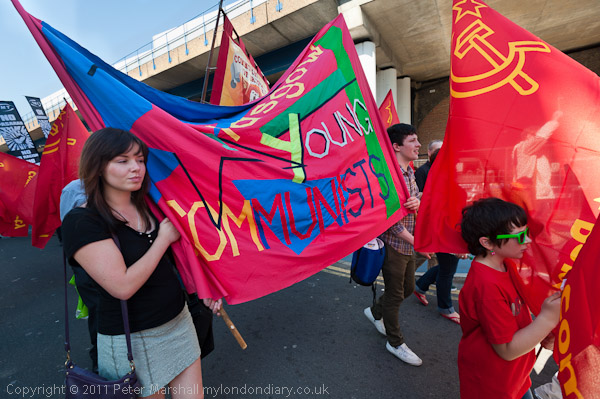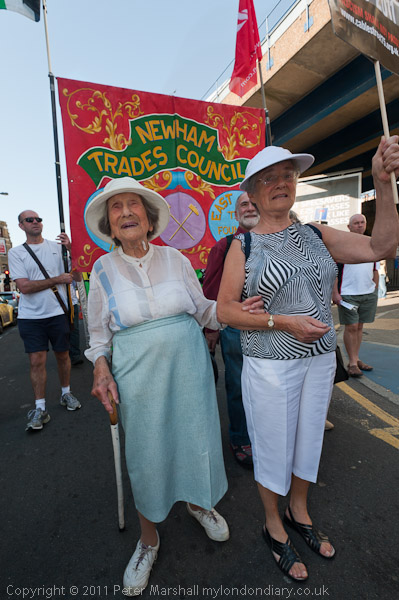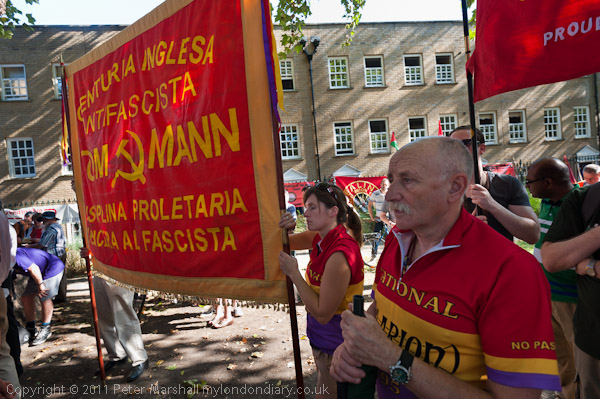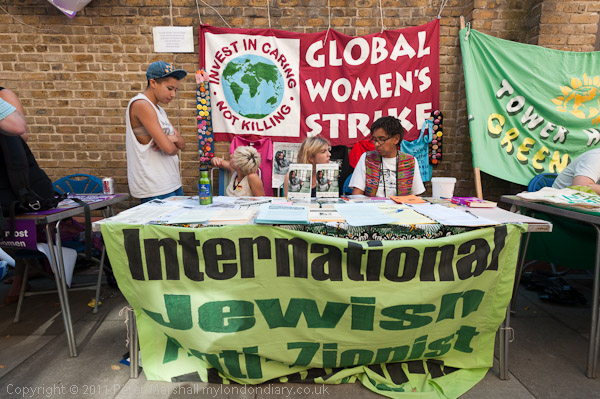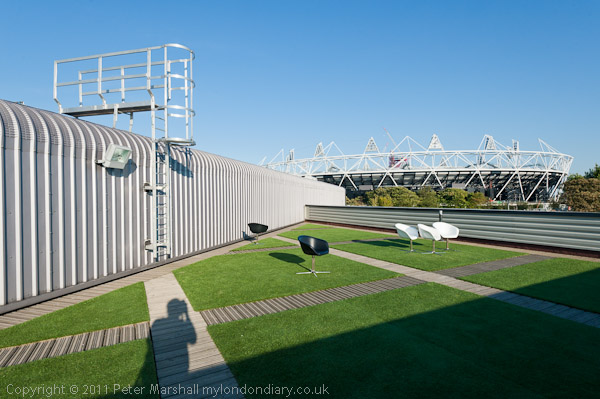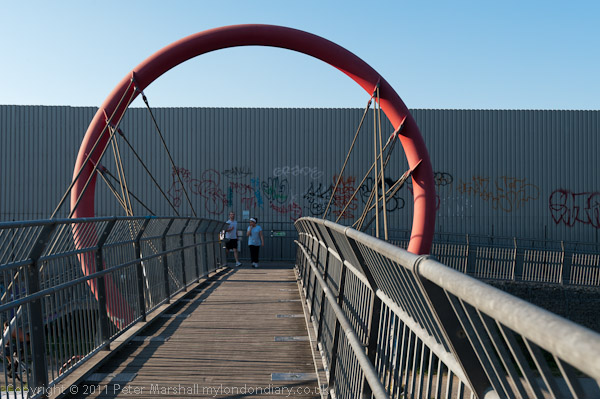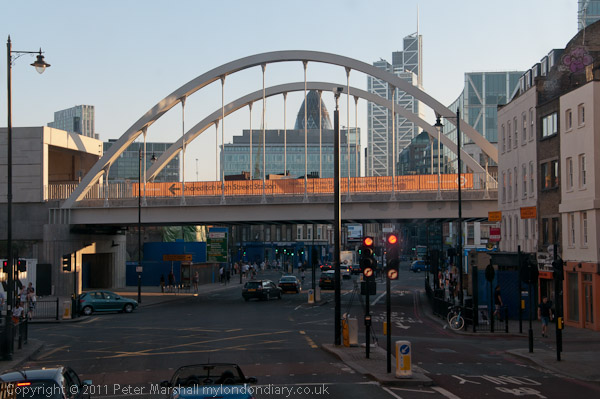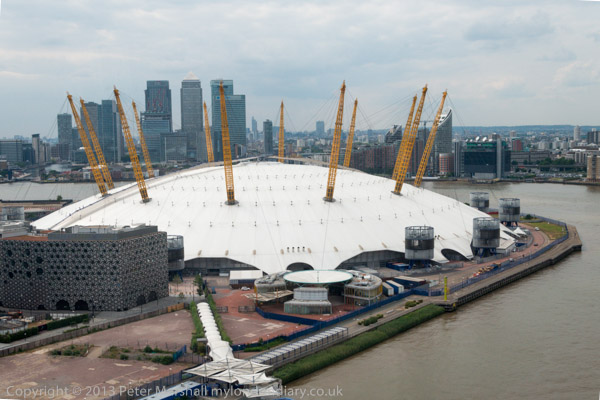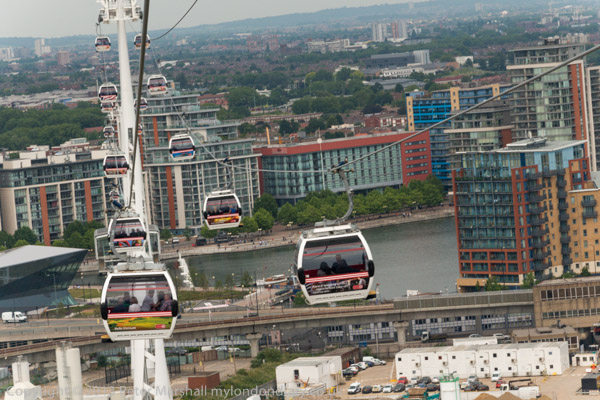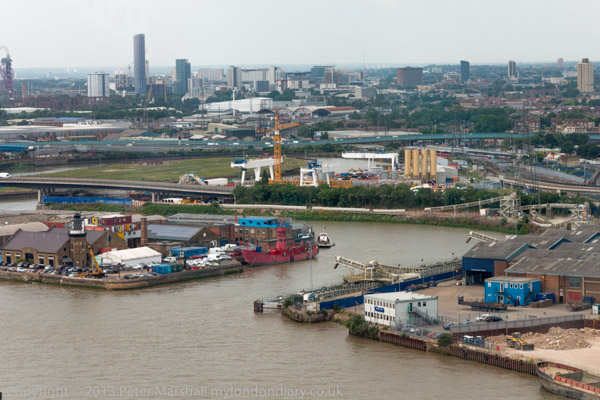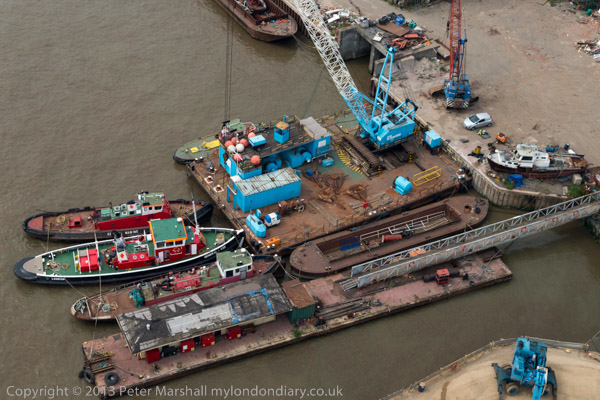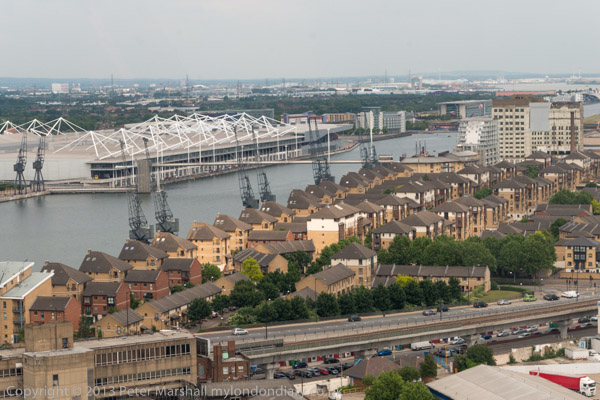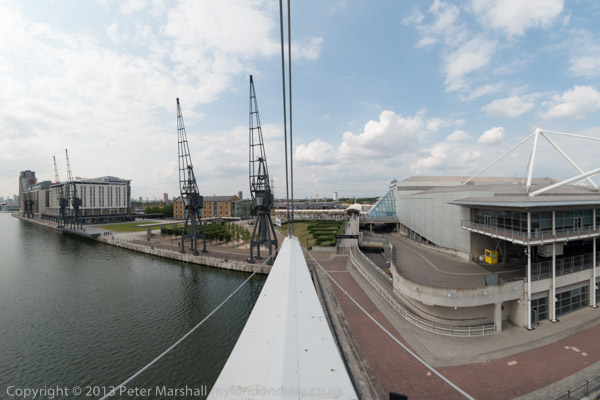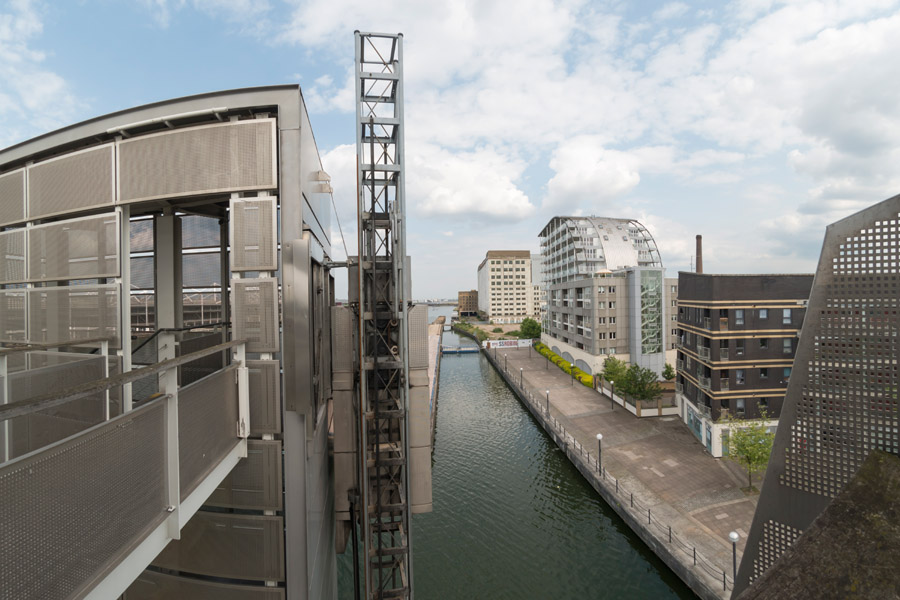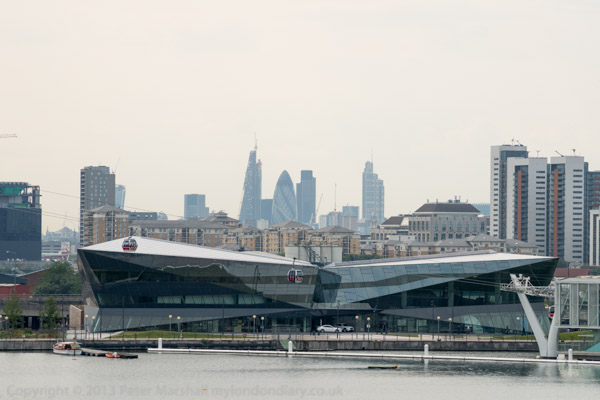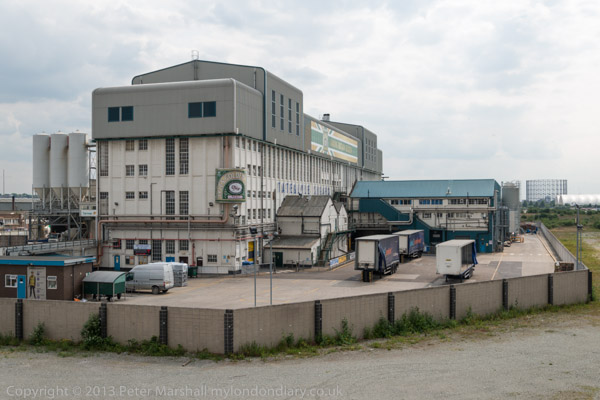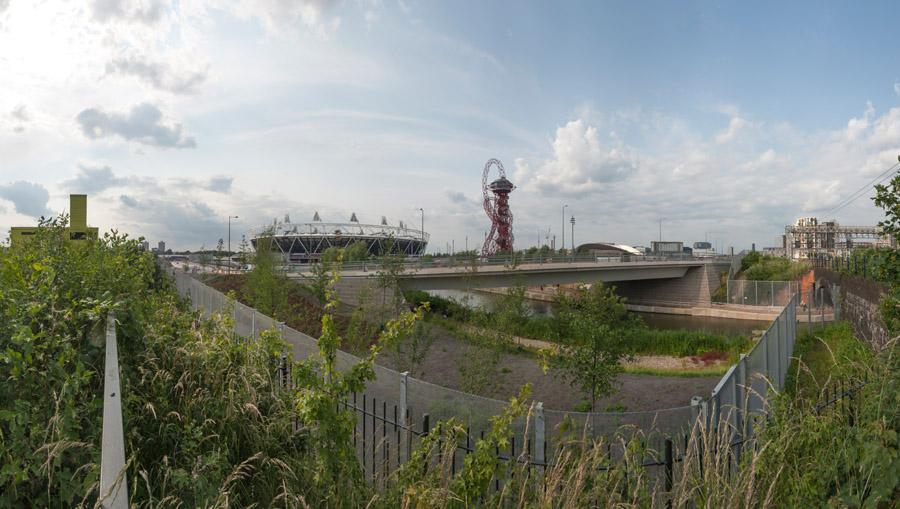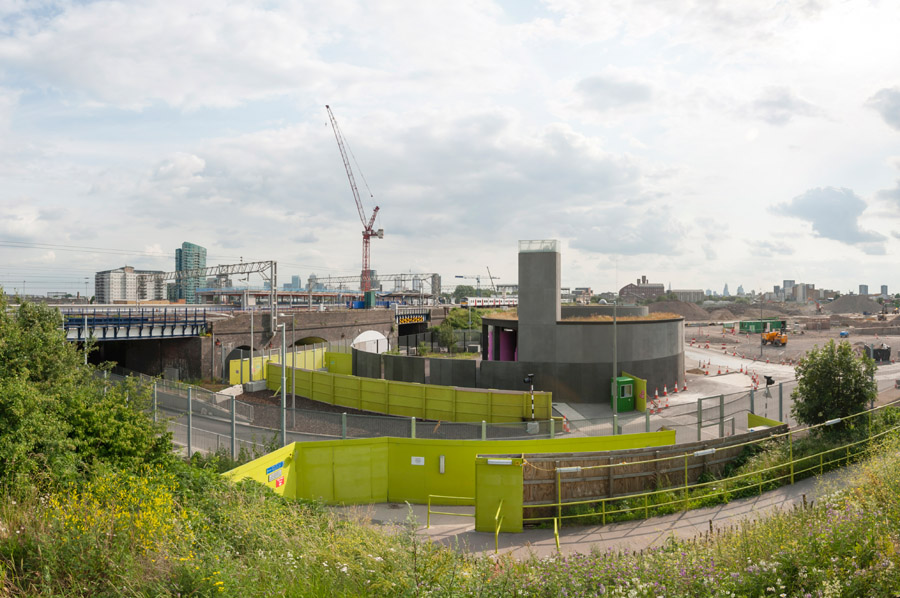Olympic Site & Budget Cuts: Wednesday 5th December 2012 was a cold day in London, with the temperature just three or four degrees above freezing during the day, but there was plenty of blue sky with a few clouds and it seemed ideal weather to wrap up and go and see what progress had been made in restoring the Olympic site, still largely off-limits some months after the end of the games. And later in the early evening I returned to Westminster for a protest against the cuts which had been announced by Chancellor of the Exchequer George Osborne in his autumn budget statement.
Olympic Area Slightly Open – Stratford Marsh
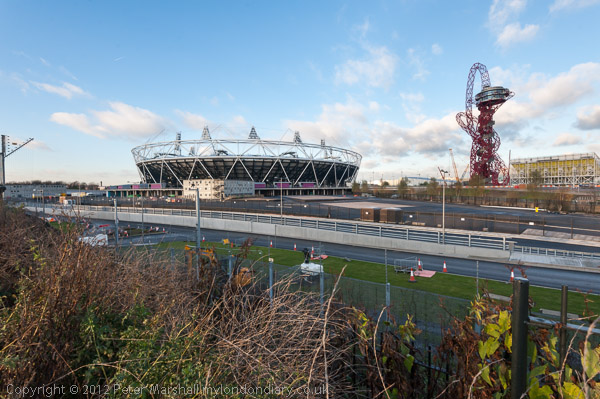
Much of the area around the Olympic site had been closed to the public in May, including the Greenway, the elevated footpath on top of the Northern Outfall Sewer which runs close to the Olympic stadium, but this was now re-opened in part.
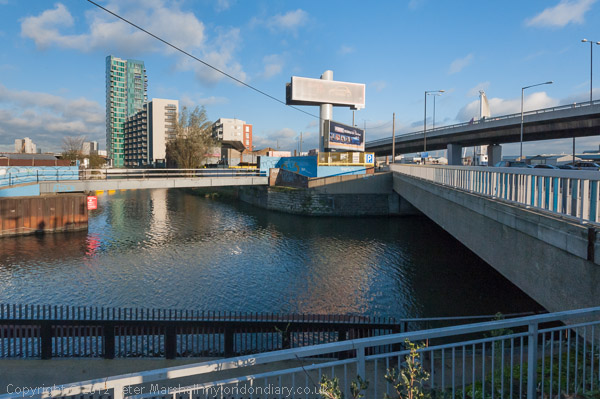
The section between Stratford High Street and the main railway lines which run from Liverpool Street station to Stratford and on further east was however still closed and would remain closed for years as work was now taking place for Crossrail – opened as the Elizabeth Line in 2022.
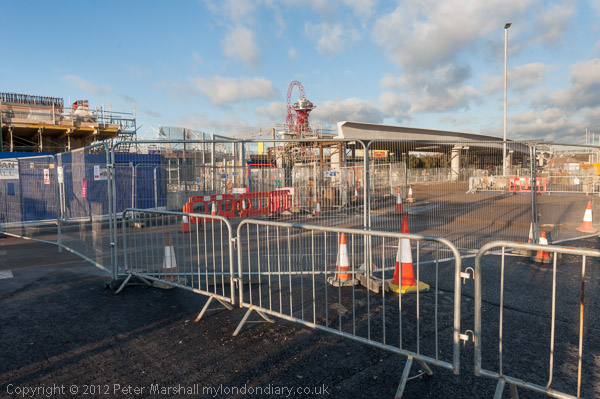
I started my walk in the early afternoon around the Bow flyover where the Bow Back rivers were still closed to traffic with a yellow floating barrier, but the footpath along the Lea Navigation had been re-opened. One improvement made presumably for the Olympics was a pathway and footbridge taking walkers under the busy road junction and across the canal.
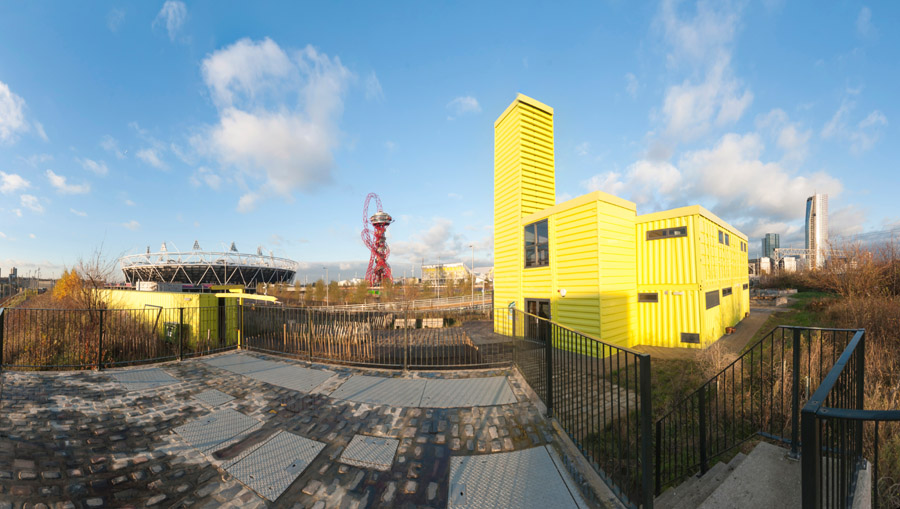
Finding the new entrance to the Greenway meant walking between fences on the Crossrail site down Pudding Mill Lane, and probably I would have abandoned the route had it not been for signs put up by the View Tube café – though when I finally reached this I found I was the only person to have done so and the cafe was deserted.
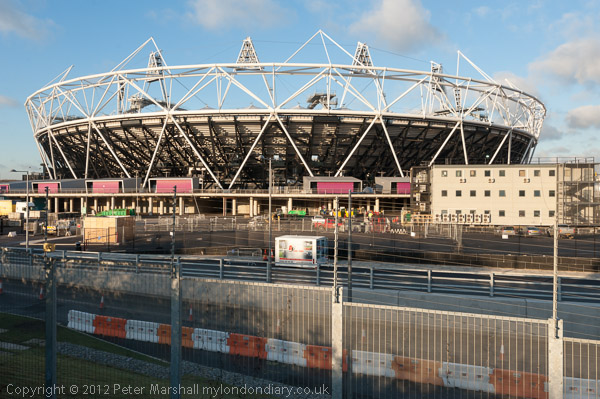
There were still fences everywhere as you can see from my photographs but I was able to walk along the Greenway to Hackney Wick and then along the towpath beside the navigation. But the footpath beside the Old River Lea was still blocked off.

By then the light was beginning to fade and the Olympic stadium was gaining a golden glow. I walked a little further along the towpath and photographed the Eton boathouse as the sun was setting setting before crossing the canal and making my way to Hackney Wick station.

Many more pictures, both normal and panoramic views on My London Diary:
Olympic Area Slightly Open.
Osborne’s Budget Cuts – Strand to Whitehall
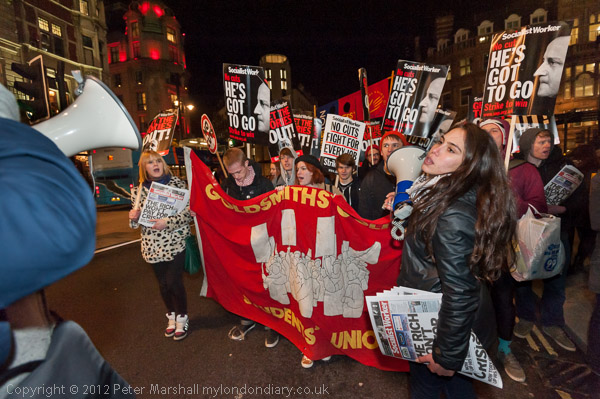
Several hundred students, trade unionists, socialists and others marched with UCU London Region down the Strand and into Whitehall shouting slogans against public service cuts, the rich, David Cameron and George Osborne in particular.
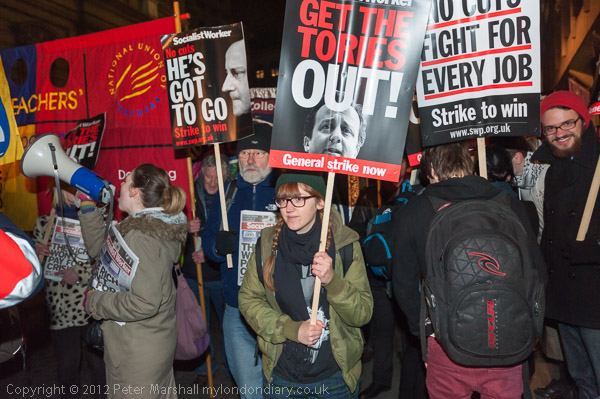
Opposite Downing Street they joined with others already protesting there including CND and Stop the War who were calling for the government to stop wasting money on the war in Afghanistan and vanity projects supporting the arms industry such as Trident and its planned replacement.

“The Afghanistan war — which everyone knows is futile and lost — is costing around £6 billion a year. The yearly maintenance costs for Trident are £2.2 billion a year. The cost of renewing the Trident system — which this government is committed to do — would cost up to £130 billion. Two aircraft carriers are being built at a cost of £7 billion. Then there’s the £15 billion to be spent buying 150 F-35 jets from the US, each of which will cost £85 million plus an extra £16 million for the engine.”
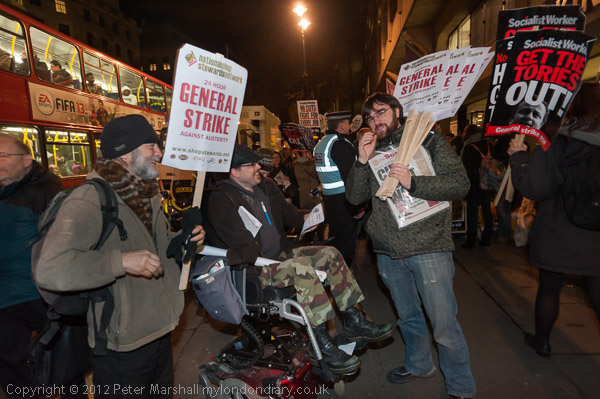
The rally began shortly after the marchers arrived. By now it was only just above freezing and speakers were asked to keep their contributions short because of the temperature.
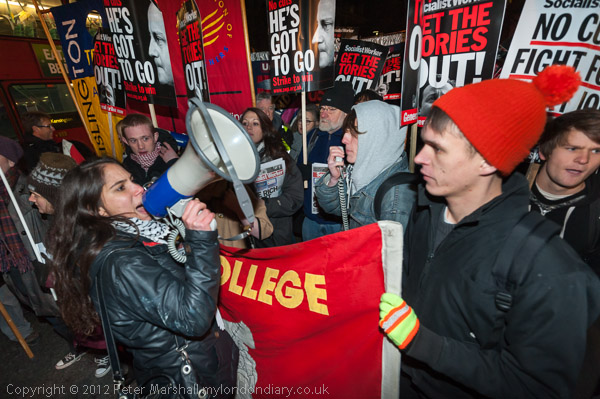
Among the speakers were John McDonnell MP, Kate Hudson of CND, author Owen Jones, Andy Greene of DPAC, Green Party leader Natalie Bennett and others including a nurse from Lewisham Hospital threatened with closures, from the NUT, UK Uncut and other trade unionists.

Many of the speakers called on trade unions to take effective action against the cuts. calling for union leaders to stop simply speaking against them and take the lead from their members and start organising strike action. But of course few did and the cuts continued unabated.
More at Osborne’s Budget Cuts.
Flickr – Facebook – My London Diary – Hull Photos – Lea Valley – Paris
London’s Industrial Heritage – London Photos
All photographs on this page are copyright © Peter Marshall.
Contact me to buy prints or licence to reproduce.
